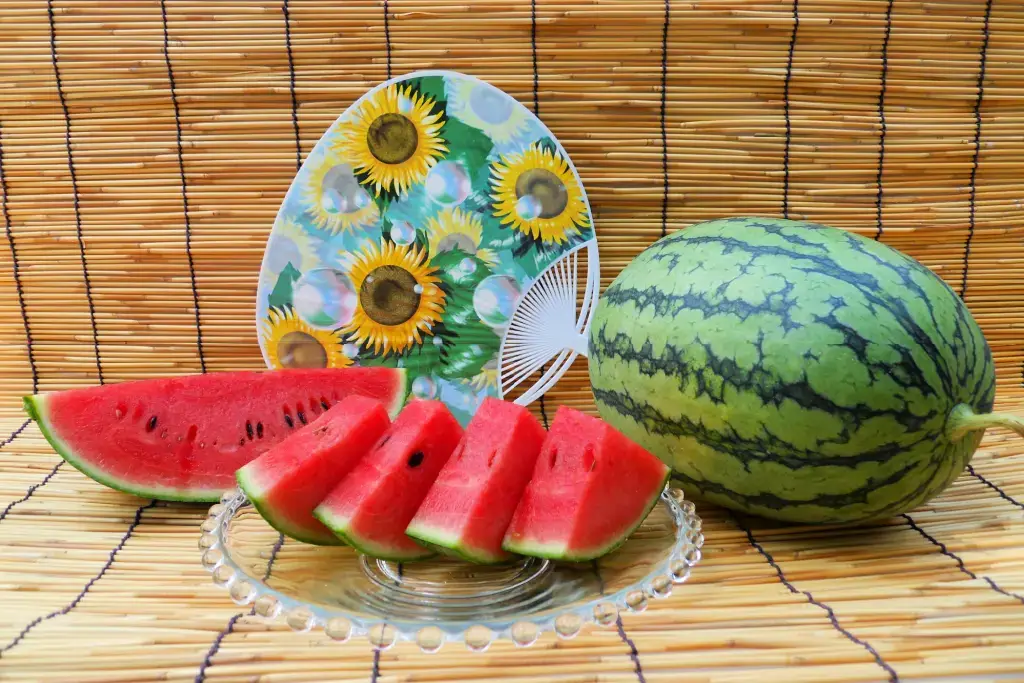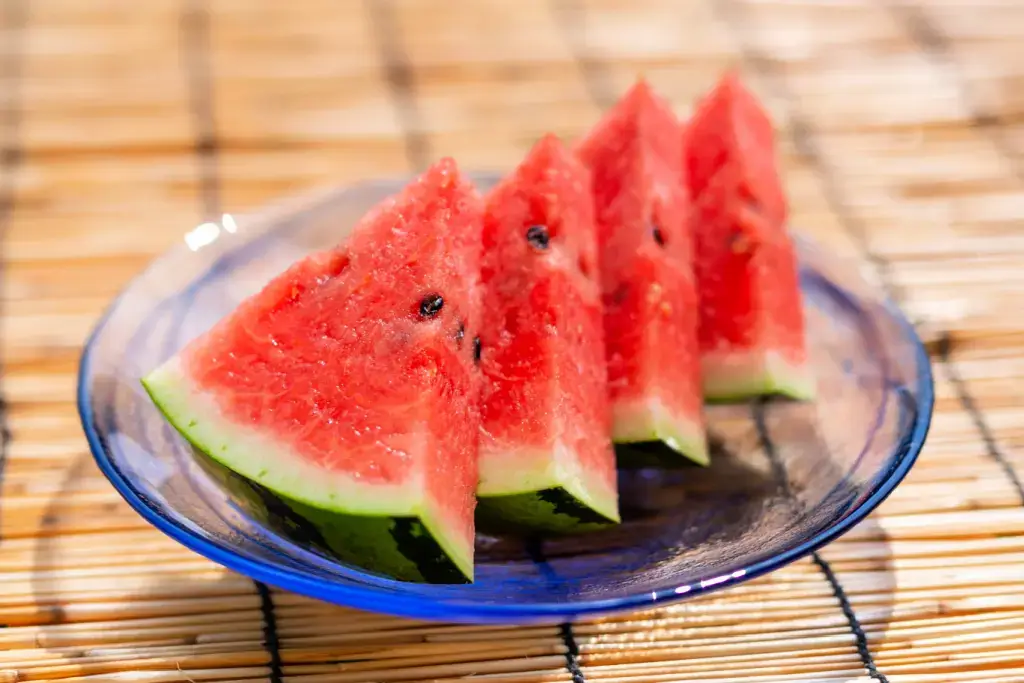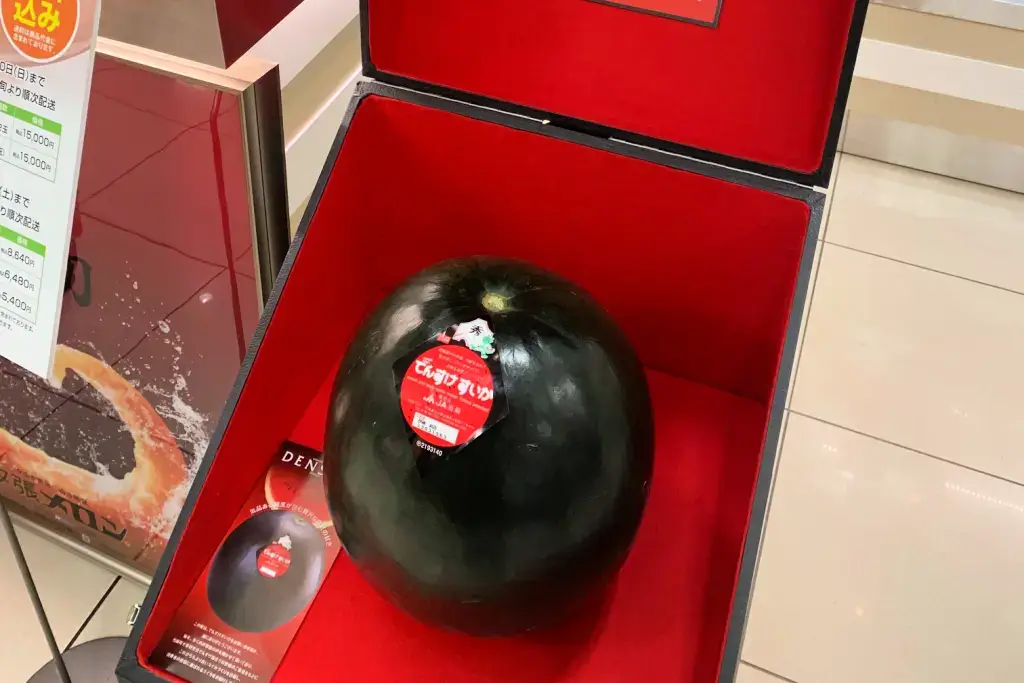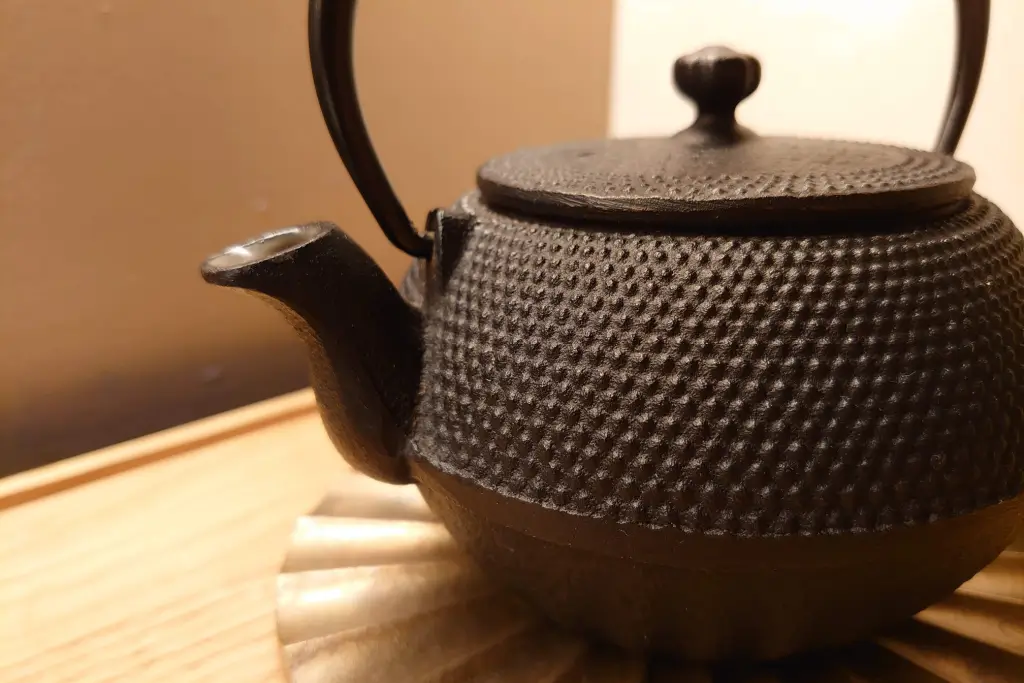Suika: Why Does Japan Love Watermelon So Much?
Thuy Fang
Posted on July 16, 2024
Share:

People in Japan celebrate watermelon on July 27th each year with events called “suika no hi,” helping them beat the summer heat and bring a refreshing touch to hot days. Many people believe this fruit influences and shapes their way of life! Let’s explore all things related to Japanese watermelon!
How did watermelon arrive in Japan?
Watermelons have a long history, dating back 4,000 years to ancient Egypt, where they appear in tomb art as green-striped melons. Over time, they spread across Asia and Europe and later reached the Americas through colonists and the African slave trade. These melons reached Japan in Asia as early as the 8th century. Their first clear record was in 1696 in a catalog called Nogyo Zensho.

In Japan, watermelons are called suika, written with the characters for “west” and “melon”. The unique thing about this fruit in Japan is the great invention of the square suika. In the late 1970s, graphic designer Tomoyuki Ono introduced this cube-shaped melon in Tokyo to make the fruit easier to store in refrigerators.
Today, the southern Japanese city of Zentsuji in Kagawa Prefecture is famous for its square watermelon industry. It’s the only place where they are officially grown. Farmers there also experiment with other shapes, like hearts and pyramids, making these fruits even more unique and fun. They became popular as centerpieces and for displays.
Are there different kinds of suika?
Besides the shaped suika mentioned above, there are also many varieties of this fruit in Japan, notably three excellent types:
Yellow watermelon
Yellow watermelon offers a delightful twist on the traditional red watermelon. Its flesh is a vibrant golden-yellow, thanks to natural pigments called carotenoids, which also provide potential health benefits. Originating in Africa thousands of years ago, this melon type evolved through natural crossbreeding and cultivation techniques, eventually spreading globally.

These watermelons vary in size and shape, ranging from oval to oblong. They have thick, dense rinds that can be dark green or mottled with lighter colors. These fruits are famous for their mild, sweet flavor with hints of tropical undertones, making them a refreshing treat for hydration. These melons have gained popularity in Japan for their unique taste and nutritional value.
Densuke watermelon
Densuke, or black watermelon, is a rare and highly valuable variety people grow exclusively in Hokkaido. Known for its glossy black skin and vibrant red flesh, it stands out for its distinct sweetness and crisp texture. These melons are famous for how they are grown and how rare they are, making them one of the most expensive fruits in the world, sometimes selling for up to $6,000 each.

Densuke watermelons were first grown in 1981 when Hokkaido farmers tried new crops beyond rice. They were trademarked in 1989 and are mainly grown in Tohma, where the island’s climate and volcanic soil are perfect. Each melon is carefully checked to ensure authenticity, making them even more exclusive and rare.
Seedless watermelon
This fruit results from crossbreeding different types to produce plants with odd chromosomes. They need specific conditions to grow, often starting in greenhouses to control temperature and moisture. The invention of seedless watermelons dates back over 50 years, focusing on developing fruits with fewer or no mature seeds. Though they may contain small, soft, white seed coats that are safe to eat, they are technically seedless.
People love these melons for their convenience and sweet taste. They come in different sizes, usually round, with light green skin and dark green stripes. Their flesh is juicy, sweet, and vibrant red, perfect for enjoying fresh or in various tasty dishes.
Are you looking for great snacks from across Japan? Check out Sakuraco! Sakuraco delivers traditional Japanese snacks, teas, and sweets from local Japanese makers directly to your door so you can enjoy the latest treats directly from Japan!
How has suika impacted Japanese culture?
This versatile fruit has become deeply embedded in Japanese culture and daily life. Unique varieties like black suika and squared suika are popular as high-end gifts during Japanese festivals and celebrations. Additionally, we can see the widespread presence of watermelons and the love Japanese people have for this fruit in both culinary aspects and fun activities, such as:
Morioka ramen
This is a well-known cold noodle dish from Morioka City, Iwate Prefecture. Inspired by Korean naengmyeon and introduced by Korean immigrants in the 1950s, it became a local favorite and one of the top three noodles in the city. Sometimes, people call it reimen, which means chilled noodles.

These noodles come in a chilled broth made from chicken and beef stock, flavored with soy sauce and dried shiitake mushrooms. Watermelon is a significant topping in Morioka ramen, making it stand out among other noodle dishes. It provides a fun and tasty twist that delights children and adults. People especially enjoy this refreshing and flavorful dish in the summer!
Suikawari
Suikawari (watermelon splitting) is a fun Japanese game traditionally played in the summertime, especially on beaches. It’s also a favorite activity at natsu matsuri (summer festivals). The game is similar to hitting a piñata but with a melon.

You need a watermelon, a stick, and a blindfold to play this game. Place the fruit on a sheet of cardboard to keep it clean. Each player wears a blindfold, gets spun around, and then tries to smash the suika with the stick, guided by friends’ directions. The first person to successfully crack open the fruit wins. After they finally split the watermelon, everyone enjoys the sweet, juicy pieces. Moreover, people often sprinkle a little salt on it to make it taste even sweeter.
Why should I try watermelon from Japan?
Japanese suika holds a special place in both taste and tradition. It’s not just a fruit but a symbol of summer joy and refreshment. Its varieties, like the square and rare Densuke watermelon, showcase Japan’s creativity and dedication to quality.
These melons are delicious and make for great gifts during festivals and celebrations. Whether you enjoy them fresh, add them to your cold ramen, or join fun games like suikawari, this juicy fruit embodies the essence of summer fun in Japan. Have you tried Japanese watermelon yet? Share your thoughts below!

Discover authentic flavors with Sakuraco
Get Sakuraco 

Discover authentic flavors with Sakuraco
Get Sakuraco 
Related Articles

Nambu Tekki: Morioka’s Amazing Iron Craft
In the historic city of Morioka, Iwate Prefecture, a craft with over 400 years of history continues to captivate with its rustic beauty and practical charm. Nambu tekki, or Nambu cast iron, refers to traditional ironware, such as teapots, kettles, and decorative pieces, that embody the spirit of Tohoku craftsmanship.

Ebisu: The Cheerful Guardian of Luck and Prosperity
Religion in Japan involves a dizzying array of spirits and beings. These gods are inspired by ancient tales and used to symbolize nature’s bounty. However, they also profoundly impact daily life and are often sought out for help in challenging times

Little New Year in Japan: Discovering Koshogatsu Traditions
When people think of the Japanese New Year, they typically associate it with January 1st. It’s a time for celebrations, family, special foods, and visits to shrines for hatsumode (first prayer of the year).

Hatsumode: Why Is It Japan’s Most Important Tradition?
Hatsumode is the first visit to a shrine or temple in the New Year in Japan, and it is one of the country’s most important traditions. Every year, millions of people participate, demonstrating the profound connection between this custom and daily life.



